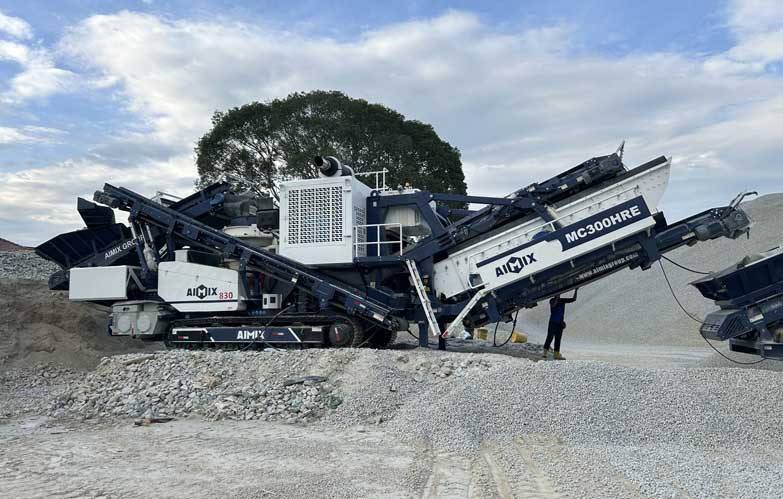The mining and construction industries in Peru continue to expand, driven by infrastructure development, urban growth, and the country’s significant mineral resources. For many contractors and investors, the demand for efficient material processing has highlighted the importance of choosing the right stone crusher plant. However, one of the main concerns in Peru is the fluctuation of equipment prices, which are influenced not only by global steel and raw material costs but also by the volatility of the exchange rate. Understanding these dynamics is essential for buyers aiming to secure reliable equipment while maintaining financial stability.
Price Trends In The Peruvian Market
In recent years, the price of a stone crusher Peru(chancadora de piedra Perú) has shown notable fluctuations. The increasing demand from mining projects, particularly in copper-rich regions, and from infrastructure projects such as road and bridge construction has kept the market competitive. At the same time, global steel price variations directly impact equipment manufacturing costs, which are passed on to buyers.
Imported machinery has generally experienced larger price swings compared with locally refurbished or second-hand machines. While a stone crusher plant sourced directly from manufacturers may carry a higher upfront price, it often offers longer service life and lower operational risk. In contrast, second-hand options available in Peru’s used equipment market may appear affordable initially but can lead to higher maintenance expenses and downtime costs over time.
Regional Demand And Project Mix
Demand for an aggregate crusher plant is uneven across Peru. Regions with active mining or major infrastructure projects show stronger purchasing power and willingness to invest in higher-spec equipment. Smaller contractors working on rural roads or local construction often prioritize mobility and affordability, creating a two-tier market for new versus second-hand equipment.
Factors Influencing Stone Crusher Plant Costs
Several factors determine the final cost of an aggregate crusher plant(planta chancadora de aridos) in Peru. Understanding these drivers helps buyers evaluate total cost and avoid surprises.
Equipment Specifications
Higher-capacity crushers, advanced screening systems, and automation features naturally increase price. For long-term or high-throughput projects, these investments typically deliver better productivity and lower per-ton processing costs, justifying the higher initial capital outlay.
Transportation And Logistics
Peru’s challenging geography amplifies transportation costs. Shipping bulky equipment to high-altitude mine sites or remote Amazon-area projects often requires special logistics, additional permits, and local handling costs. These variables can add a significant premium to the delivered price of a stone crusher plant.
Local Policies And Tariffs
Import duties, value-added taxes, and local regulatory compliance costs influence the price. Changes in fiscal policy or temporary tariffs can quickly alter the business case for imported machinery versus locally sourced or refurbished options.
Exchange Rate Volatility And Its Impact
One of the biggest challenges for Peruvian buyers is exchange rate risk. Since most stone crusher plant(planta chancadora) purchases are denominated in U.S. dollars, the Peruvian sol’s movement against the dollar directly affects the local-currency price of equipment. A weakening sol raises capital requirements in soles, potentially disrupting project budgets and ROI timelines.
Practical Hedging Strategies For Buyers
To mitigate exchange rate risk, companies operating in Peru can adopt several practical strategies:
- Forward Contracts — Locking in an exchange rate with a financial institution secures the local-currency cost and removes short-term FX uncertainty during procurement.
- Currency Diversification — Maintaining reserves in multiple currencies or linking revenues to dollar-indexed contracts helps reduce exposure.
- Negotiating Local Currency Payments — Where possible, negotiating payment terms that include partial payments in Peruvian soles can lower direct dollar exposure.
- Sourcing Local Suppliers or Second-Hand Machines — Buying refurbished equipment or negotiating through local dealers often reduces FX exposure because transactions can be settled in soles.
Financing, Total Cost Of Ownership And Long-Term Considerations
Beyond the purchase price and exchange rate, financing structure and total cost of ownership (TCO) are critical to making the right equipment decision. Leasing, supplier financing, and staged payments can improve cash flow but come with interest costs that must be weighed against operational benefits.
Assessing Total Cost Of Ownership
A modern aggregate crusher plant with energy-efficient drives, durable wear parts, and strong after-sales support can substantially reduce operating expenses. Buyers should evaluate electricity consumption, wear part replacement cycles, anticipated downtime, and the supplier’s training and spare-parts availability when calculating TCO.
Residual Value And Second-Hand Market
Consider the expected residual value of the machine at the end of useful life. Machines with recognized global brands and documented maintenance histories tend to retain higher resale values in Peru’s second-hand market—improving lifecycle economics and lowering net ownership cost.
Practical Recommendations For Peruvian Buyers
To navigate price trends and FX risk effectively, buyers should:
- Perform a full lifecycle cost analysis rather than focusing solely on upfront price.
- Consider mixed procurement strategies—combine new and refurbished units to balance reliability and cost.
- Negotiate payment terms that reduce dollar exposure and include clear warranty and support commitments.
- Use hedging tools or local financing to stabilize currency risk during procurement.
- Factor logistics, altitude, and site access into the total delivered cost calculation.
Market Outlook For Stone Crusher Plants In Peru
Demand for stone crusher plant installations in Peru is expected to remain robust as infrastructure programs and mining projects continue. Price volatility will persist while global commodity and steel prices fluctuate, and exchange rate dynamics will remain an important variable in procurement decisions.
Buyers who take a holistic approach—balancing equipment specification, lifecycle costs, financing, and FX mitigation—will be better positioned to achieve predictable costs and stronger returns on their investments in the Peruvian aggregates market.
Conclusion
The cost of acquiring a stone crusher Peru is influenced by multiple interrelated factors: global raw material prices, local logistics and tariffs, equipment specifications, and exchange rate movements. A disciplined procurement strategy that includes TCO analysis, sensible financing, and active FX risk mitigation will help Peruvian contractors and mining operators secure the right aggregate crusher plant for their projects while protecting project budgets and ROI.

Comments
No comments yet. Be the first to react!